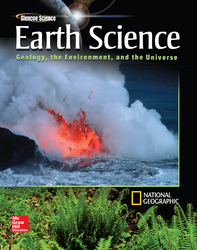1 A) tidal range B) upwelling current C) tsunami D) seiche 2 A) strain buildup only B) location of foci C) reoccurrence rates of earthquakes in an area and the rate of strain buildup D) magnitude of P-waves 3 <a onClick="window.open('/olcweb/cgi/pluginpop.cgi?it=gif::::/sites/dl/free/0078746361/561760/146_wmap_ls_190c.gif','popWin', 'width=NaN,height=NaN,resizable,scrollbars');" href="#"><img valign="absmiddle" height="16" width="16" border="0" src="/olcweb/styles/shared/linkicons/image.gif"> (45.0K)</a> A) 30°S, 60°W B) 0°N, 180°W C) 60°N, 120°E D) 0°N, 30°W 4 A) wood B) concrete C) steel D) brick 5 A) water saturated soil or sand B) rocks and sand in the desert C) volcanic ash that gets mixed with melting snow D) topsoil in which crops are growing





